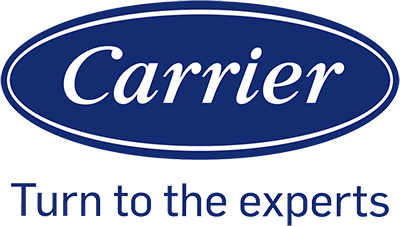Clean air in our homes matters more than we often realize. Dust, pollen, and other particles can build up in air ducts and circulate through every room. Air duct cleaning removes these contaminants and helps improve the purity of the air we breathe every day.

When we take care of our air ducts, we also support the performance of our HVAC systems. Clean ducts allow air to flow more freely, which reduces strain on equipment and helps maintain steady indoor comfort. This simple step can make a real difference in both air quality and system efficiency.
We will look at how air duct cleaning works, why it matters for indoor air, and the added benefits it brings to energy use and long-term maintenance. By understanding these points, we can see how a clean system supports a healthier and more efficient home.
How Air Duct Cleaning Improves Home Air Purity
Clean air ducts help limit the spread of particles that affect indoor air quality. By removing buildup inside the system, we reduce what circulates through the rooms we live in each day.
Removal of Dust and Allergens
Air ducts collect dust, pollen, and pet dander over time. When the system runs, these particles can move into the air we breathe. Cleaning the ducts lowers the amount of buildup that re-enters the home.
This process helps reduce common irritants that settle on furniture and floors. It also cuts down on the small particles that remain suspended in the air.
We often notice less dust on surfaces after cleaning, which means fewer particles are moving through the system. For families with pets, removing dander from ducts can make a clear difference in daily air freshness.
A cleaner duct system does not remove every allergen, but it limits the sources that keep adding new particles into the air. This step supports healthier indoor air quality with less effort needed for daily cleaning.
Reduction of Mold Spores and Bacteria
Moisture inside ducts can allow mold spores and bacteria to grow. These can spread through the airflow and affect the air we breathe. Cleaning the ducts helps remove buildup where growth may occur.
When we address moisture problems, such as leaks or condensation, we lower the chance of mold returning. Regular cleaning combined with proper ventilation reduces the spread of these microorganisms.
Mold spores can trigger reactions like coughing or eye irritation. Bacteria in ducts may also contribute to unpleasant odors in the home. By keeping ducts clean, we help reduce these risks.
A clean system also makes it easier to spot problems early. If we see signs of mold or water damage, we can take steps before the issue spreads further into the home.
Impact on Allergies and Asthma
People with allergies or asthma often notice changes in symptoms when air ducts are cleaned. Lowering the levels of dust, pollen, and dander in circulation can reduce irritation of the airways.
Clean ducts limit triggers that may cause sneezing, congestion, or breathing difficulty. This is especially important for children, older adults, or anyone with sensitive respiratory systems.
We cannot remove every allergen from the home, but we can reduce the constant flow of particles through the air system. Less exposure often means fewer flare-ups and more comfort indoors.
For asthma, even small improvements in indoor air quality can make a difference. Cleaner ducts support easier breathing and help create a healthier environment for daily living.
The Role of Air Ducts and HVAC Systems in Air Quality
Air ducts and HVAC systems move air through our homes, carrying both clean and polluted particles. The way they are maintained affects how much dust, allergens, and other contaminants we breathe indoors.
How Air Ducts Circulate Contaminants
Air ducts act like pathways that connect every room to the heating and cooling system. When dust, pollen, and pet dander collect inside them, the system pushes these particles back into the air we breathe. This cycle repeats every time the system turns on.
Moisture inside ducts can also lead to mold growth. When mold spores spread through the ducts, they can lower indoor air quality and cause unpleasant odors.
We often notice the impact in rooms with poor ventilation. Dust build-up near vents, uneven airflow, or musty smells are signs that contaminants are moving through the system. Regular duct cleaning reduces the amount of debris that circulates.
Key contaminants that spread through ducts include:
- Dust and dirt
- Pollen and allergens
- Pet hair and dander
- Mold spores
- Bacteria and small particles
By keeping ducts clean, we limit how much of these substances move through the air.
Heating and Cooling System Maintenance
The heating and cooling system works best when it is clean and free from blockages. Clogged filters, dirty coils, and blocked vents force the system to work harder, which reduces efficiency and spreads more pollutants.
Routine maintenance helps prevent these issues. This includes inspecting ducts, checking for leaks, and cleaning coils and fans. When we keep the system in good condition, it not only improves air quality but also lowers energy use.
Simple steps like replacing filters on time and scheduling yearly service checks make a difference. Neglecting maintenance often leads to higher dust levels, uneven temperatures, and poor airflow.
A well-maintained system ensures that air moves smoothly through ducts without carrying excess dirt or contaminants.
Importance of Filtration and HEPA Filters
Filters play a central role in trapping dust and particles before they circulate. Standard filters capture larger particles, but smaller ones often pass through. This is where HEPA filters become valuable.
A HEPA filter can trap up to 99.97% of particles as small as 0.3 microns. This includes fine dust, pollen, and even some bacteria. Using HEPA filters in our HVAC system can greatly improve indoor air quality.
However, filters need regular replacement to stay effective. A clogged filter restricts airflow, which forces the system to work harder and reduces its ability to clean the air.
We can also use a simple maintenance schedule:
| Filter Type | Replacement Frequency | Notes |
|---|---|---|
| Standard fiberglass | Every 30 days | Low cost but limited filtration |
| Pleated filter | Every 60–90 days | Better at capturing dust |
| HEPA filter | Every 6–12 months | Highest filtration, may need system compatibility check |
By choosing the right filter and replacing it on time, we improve airflow and reduce the spread of pollutants inside our homes.
Energy Efficiency and Cost Benefits of Clean Air Ducts
Clean air ducts help our heating and cooling system run with less strain, which reduces wasted energy. They also lower costs by cutting down on utility bills and preventing expensive repairs over time.
Improved Airflow and System Performance
When dust and debris build up in air ducts, airflow becomes restricted. This forces our heating and cooling system to work harder to push air through the vents. As a result, energy use increases and comfort levels drop.
By keeping ducts clean, we allow air to move freely. This steady airflow helps rooms reach the set temperature faster and keeps the system from running longer than needed.
Regular duct cleaning also reduces wear on parts like the blower motor and fan. Less strain on these components means fewer breakdowns and smoother operation. In the long run, the system maintains its efficiency and provides consistent performance.
Lower Utility Bills
A system that runs more efficiently uses less energy. When ducts are free from blockages, our furnace and air conditioner do not need to cycle as often or stay on as long. This directly lowers monthly utility bills.
For example, consider two homes:
| Condition of Ducts | Energy Use | Monthly Bill Impact |
|---|---|---|
| Dirty, blocked ducts | High | Higher costs |
| Clean, clear ducts | Lower | Reduced costs |
Even small improvements in airflow can lead to noticeable savings. Over the course of a year, these savings can cover the cost of professional cleaning.
Long-Term Savings for Homeowners
Clean ducts not only lower bills but also extend the life of our heating and cooling system. When the system does not have to work as hard, parts last longer and require fewer repairs.
This reduces the chance of major expenses, such as replacing a motor or compressor. Preventing these issues can save homeowners hundreds or even thousands of dollars over time.
In addition, a well-maintained system often runs more quietly and evenly. This adds comfort while protecting the investment we have made in our home’s equipment. By keeping ducts clean, we get both short-term and long-term financial benefits.
Best Practices and Standards for Air Duct Cleaning
We keep our home’s air cleaner when we follow a set schedule, use trusted industry standards, and watch for signs of buildup in the system. By doing this, we reduce dust, allergens, and other particles that can affect indoor air quality.
Recommended Cleaning Frequency
Air ducts do not need cleaning every year in most homes. The National Air Duct Cleaners Association (NADCA) suggests a professional cleaning every 3 to 5 years under normal conditions.
We may need more frequent service if we have pets, smokers, or family members with allergies. Renovations or construction inside the home also add dust that collects in ducts.
A simple way to decide is to check the air filter. If it clogs quickly or looks dirty after a short time, the ducts may also hold excess debris. Keeping up with filter changes every 1–3 months helps extend the time between duct cleanings.
NADCA Guidelines and Professional Services
NADCA sets the main standards for duct cleaning. They require that professionals follow a process that removes dust and debris without releasing it back into the air.
When we hire a contractor, we should confirm they are NADCA-certified. This shows they use proper equipment such as HEPA-filtered vacuums and follow safety rules. Certified providers also give a clear scope of work and avoid shortcuts like spraying sealants without cleaning first.
We should expect the service to include supply ducts, return ducts, registers, and the air handler. A full cleaning usually takes several hours depending on the size of the system. Choosing a provider who follows NADCA rules helps us avoid scams and ensures the ducts are cleaned thoroughly.
Signs Your Air Ducts Need Cleaning
We can look for several signs that show ducts may need attention. Visible dust buildup around vents or registers is one of the most common.
Other signs include unusual odors when the system runs, weak airflow, or more dust collecting on surfaces than usual. If we see mold inside ducts or on HVAC parts, professional cleaning is necessary.
Rodent or insect activity in the system also requires immediate service. In these cases, cleaning helps remove droppings, nesting material, and contaminants. By watching for these signs, we can schedule cleaning at the right time instead of guessing.




